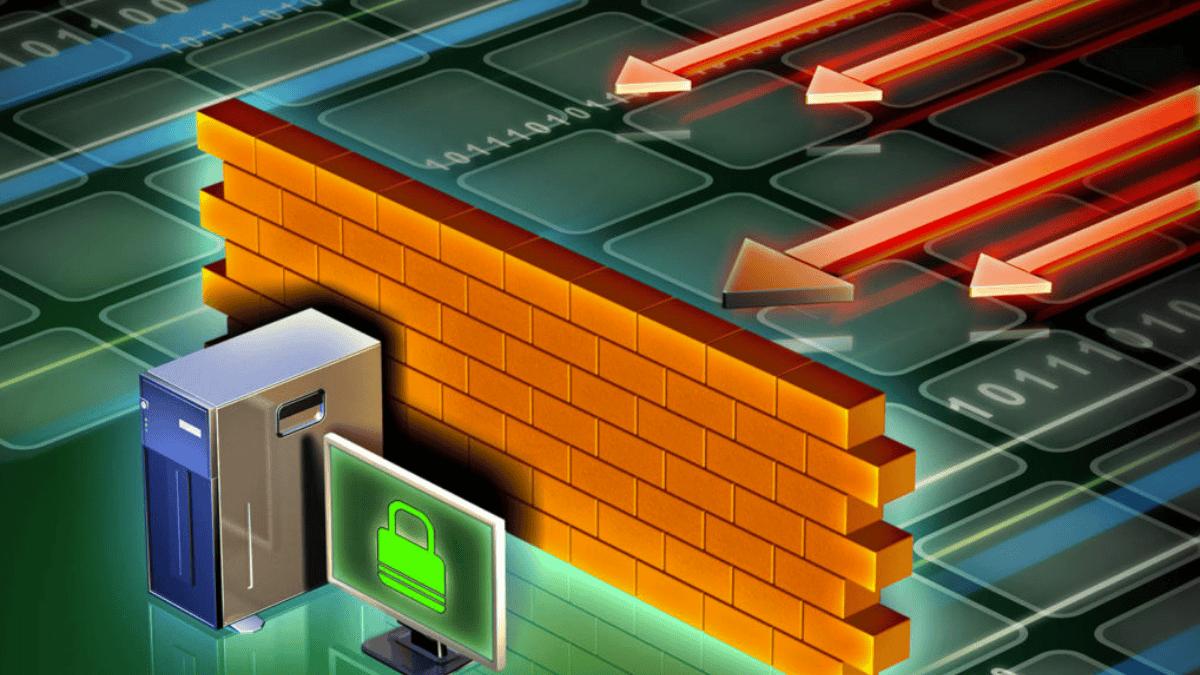In today's digital landscape, network security plays a critical role in ensuring the safety of sensitive information and maintaining the integrity of IT systems. As businesses increasingly rely on cloud-based solutions, cloud migration becomes an essential consideration, requiring robust security measures. Firewalls are essential components of network security, providing an effective defense against various cyber threats.
Understanding the Role of Firewalls
Firewalls serve as a protective shield, blocking external threats from accessing internal networks. They monitor incoming and outgoing network traffic based on predetermined security rules. The primary functions of firewalls include:
- Traffic Control: Firewalls regulate the data entering and leaving the network, allowing only legitimate traffic.
- Threat Detection: They can identify and block potential attacks, helping to prevent unauthorized access.
- Monitoring: Firewalls keep track of traffic patterns, which can provide insights into possible vulnerabilities and attacks.
The implementation of firewalls is crucial for organizations seeking to protect their data and maintain a secure network environment.
5 Common Threats to Network Security
Various threats can compromise network security, making firewalls essential for safeguarding information. Here are some of the most prevalent threats that organizations face:
| Threat Type | Description |
| Malware | Malicious software designed to harm, exploit, or disable computers and networks. |
| Phishing | Attempts to trick users into revealing sensitive information through deceptive emails or websites. |
| Ransomware | A type of malware that encrypts files, demanding payment for decryption. |
| Denial of Service (DoS) | Attacks aimed at overwhelming systems, making them unavailable to users. |
| Man-in-the-Middle (MitM) | Interception of communication between two parties, allowing attackers to steal or manipulate data. |
Understanding these threats reinforces the need for robust firewalls within network security strategies. They provide a necessary layer of defense against the evolving landscape of cyber threats facing organizations today.
Functionality of Firewalls
Understanding the functionality of firewalls is essential for appreciating their importance in network security. Firewalls serve as a barrier between internal networks and external threats. They are crucial in protecting sensitive data and maintaining the integrity of the network.
How Firewalls Work
Firewalls monitor and control incoming and outgoing network traffic based on predetermined security rules. They filter data packets and determine whether to allow or block them based on security protocols. Firewalls operate at various layers of the network architecture, offering multiple levels of protection.
Key Functions of Firewalls:
| Function | Description |
| Packet Filtering | Inspects packets against specified rules. |
| Stateful Inspection | Keeps track of active connections and determines validity. |
| Proxy Service | Acts as an intermediate for requests from clients seeking resources from other servers. |
| Deep Packet Inspection | Examines the data and header of packets for malicious intent. |
4 Types of Firewalls
There are several types of firewalls available, each serving different needs and purposes. Understanding the various types helps organizations choose the right solution for their specific security requirements.
| Firewall Type | Description | Advantages |
| Packet-Filtering Firewall | Filters traffic based on IP addresses and protocols. | Simple and efficient for basic filtering. |
| Stateful Inspection Firewall | Monitors active connections to determine if traffic is legitimate. | Provides a higher level of security. |
| Proxy Firewall | Intercepts and forwards requests from clients to servers. | Hides internal IP addresses for added security. |
| Next-Generation Firewall | Combines traditional firewall functionality with advanced features like intrusion prevention. | Comprehensive protection against modern threats. |
Understanding how firewalls function and their various types is critical for SMEs as they explore IT support and services to enhance their network security. Firewalls play a vital role in defending against cyber threats, safeguarding sensitive information, and maintaining compliance with industry regulations.
Protection Against Cyber Threats
Implementing firewalls is crucial for safeguarding networks against various cyber threats. They serve as the first line of defense, ensuring that malicious activities are effectively managed and mitigated.

Preventing Unauthorized Access
One of the primary functions of firewalls is to prevent unauthorized users from gaining access to sensitive network resources. By establishing a barrier between internal networks and external threats, firewalls can block unsolicited and harmful traffic.
Blocking Malicious Content
Firewalls are designed to block harmful content that can compromise the security of the network. This includes viruses, malware, and other types of malicious software that may attempt to infiltrate a system.
Firewalls analyze incoming data and enforce rules to prevent these threats from entering the network.
Monitoring Network Traffic
In addition to blocking harmful content, firewalls continuously monitor network traffic for suspicious activities. This monitoring allows for real-time detection and response to potential threats, ensuring a proactive approach to network security.
Maintaining a watchful eye on network transactions, firewalls help organizations identify and address security vulnerabilities efficiently.
Integration with Security Measures
The integration of firewalls into an overall network security strategy is essential for effective protection. Utilizing a layered security approach and ensuring collaboration with antivirus software are two key aspects of this integration.
Layered Security Approach
A layered security approach, also known as defense-in-depth, involves multiple security measures working together to provide comprehensive protection. This strategy acknowledges that no single security solution can fully safeguard a network. By combining various layers of security, organizations can significantly reduce vulnerability to cyber threats.
The following table outlines the different layers of security that can be integrated with firewalls:
| Security Layer | Description |
| Firewalls | Control incoming and outgoing network traffic. |
| Intrusion Detection Systems (IDS) | Monitor network traffic for suspicious activity. |
| Antivirus Software | Identify and eliminate malware from devices. |
| Endpoint Protection | Secure individual devices within the network. |
| Data Encryption | Protect sensitive data during transmission. |
| User Access Controls | Restrict access to sensitive information. |
Incorporating these elements, SMEs can create a robust security environment that effectively defends against various cyber threats.
Collaboration with Antivirus Software
Firewalls play a critical role in blocking unwanted traffic, but integrating them with antivirus software enhances overall network protection. Antivirus programs specialize in detecting and removing malware, while firewalls focus on managing network traffic. Together, they provide a well-rounded security solution.
Collaborating, these components can offer proactive defense against known threats while also monitoring for new, emerging threats. This synergy is crucial for SMEs that require reliable IT support and services to maintain secure networks.
For SMEs seeking to enhance their IT security and optimize their cloud applications, it's essential to stay ahead of potential vulnerabilities. Our article, "Best Practices for Cloud Application Refactoring Explained," provides expert insights on how to efficiently refactor your cloud applications, ensuring both performance and security. Learn how these strategies can help you improve scalability and resilience while minimizing risks.
Best Practices for Firewall Management
Effective firewall management is critical for safeguarding networks from various threats. The following best practices provide essential guidelines for SMEs seeking to maintain strong security measures.

Regular Updates and Patching
Keeping firewalls updated is crucial to protect against vulnerabilities. Regular updates ensure that the security software is equipped to handle newly discovered threats. Following these practices can enhance the effectiveness of firewall defenses.
| Update Frequency | Importance |
| Weekly | Address critical threats and enhance functionality |
| Monthly | Ensure all security patches are applied |
| Quarterly | Review firewall settings and update as necessary |
| Annually | Conduct a full assessment for potential upgrades |
Configuring Rules and Permissions
Configuring rules and permissions within a firewall allows for fine-tuned control over network traffic. Properly set rules can improve security by only allowing necessary traffic while blocking harmful access attempts. Key considerations include:
| Rule Type | Description |
| Ingress Rules | Define what traffic can enter the network |
| Egress Rules | Specify what traffic can leave the network |
| User Permissions | Control access based on roles within the organization |
| Application Filters | Allow or block traffic based on specific applications |
Monitoring and Incident Response
Continuous monitoring of firewall activity is essential for identifying potential threats. Setting up alerts for unusual activities enables swift action to mitigate risks.
| Monitoring Activity | Response Timeframe |
| Immediate Alerts | Respond to critical threats within minutes |
| Daily Reviews | Analyze traffic logs for signs of intrusion |
| Monthly Reports | Summarize security events for trend analysis |
| Annual Audits | Evaluate firewall performance and compliance |
Shape a Stronger Digital Future with LK Tech
Implementing these best practices helps SMEs ensure that their firewalls are effective in protecting against unauthorized access and cyber threats. Regular updates, proper configuration, and vigilant monitoring are key components of a robust network security strategy. At LK Tech, we provide top-notch IT support tailored to your unique needs, ensuring that your business remains secure and protected at all times.
If you need expert guidance from a trusted IT company in Cincinnati, don't hesitate to contact us today and let us help safeguard your network.


